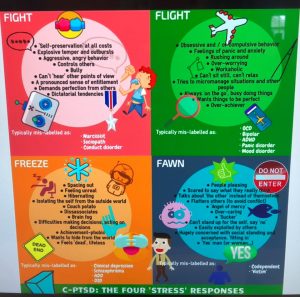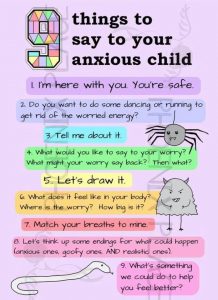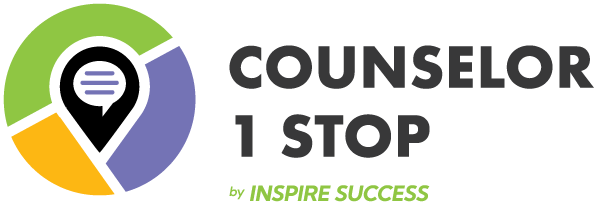Cognitive Science
Cognitive science or Neuroscience is an offshoot of human psychology and is literally the study of cognition, or thought.
Cognitive science is an offshoot of human psychology and is literally the study of cognition, or thought. It includes language, problem-solving, decision-making, and perception, especially consciously aware perception. Cognitive science started with those higher-level behavioral traits that were observable or testable and asked what is going on inside the mind or brain to make that possible. Cognitive science includes anything to do with cognition while neuroscience is the study of the nervous system. Cognitive science includes neuroscience, but also includes psychology, artificial intelligence, philosophy, linguistics, and anthropology.
KEY POINTS
- Cognitive science and neuroscience:
- Neuroscience is a branch of biology that began as the study of the anatomy and physiology of neural tissue. It grew out of clinical neurology and neurobiology, which evolved into neuroscience. Neurobiology concerns itself first and foremost with the observed anatomy and physiology of the brain, from major structures down to neurons and molecules. Neuroscience adds to that the study of how the brain works, mechanistically, functionally, and systemically to produce observable behavior. This sometimes surprises people, but neuroscience is not solely — or even primarily — focused on the mind. Neuroscience is the study of the nervous system, but it can be studied in ways that are not directly related to the mind as such. Most sub-fields of neuroscience have some connection to how the mind works — some more so than others.
- Recently, cognitive science and neuroscience have been meeting in the middle. When fMRI (Functional magnetic resonance imaging) came along, cognitive science, part of the “soft science” of psychology, suddenly got new legitimacy as a branch of the “hard science” of neuroscience. Funding increased, cognitive scientists started calling themselves neuroscientists, and the focus shifted to generating fMRI pictures of what was going on inside of the head rather than just speculating based on psychophysics observations.
- Meanwhile neuroscience, which was working its way up from neurons and “lower animals,” started getting traction on higher-level topics like the formation of representational schemes, neural coding, memory, and decision-making. fMRI also served neuroscience because it made human experiments possible, opening the door to studying higher-level and human-only capacities. At that point, it bumped into cognitive science.
- Cognitive neuroscience is the scientific field that is concerned with the study of the biological processes and aspects that underlie cognition, with a specific focus on the neural connections in the brain which are involved in mental processes. Cognitive neuroscience is a branch of both neuroscience and psychology, overlapping with disciplines such as behavioral neuroscience, cognitive psychology, physiological psychology and affective neuroscience. Cognitive neuroscience relies upon theories in cognitive science coupled with evidence from neurobiology.
This hexagon helps understand the various disciplines that contribute to cognitive science..
RESOURCES
- My brain is passing ILearn!
- IDOE Educational Neuroscience Toolkit: https://www.doe.in.gov/sites/default/files/sebw/educational-neuroscience-toolkit-cover.pdf
- Book, Eyes are Never Quiet, by Dr. Lori Desaultes and Michael McKnight.
- Butler University, Applied Educational Neuroscience Certificate. https://www.butler.edu/coe/applied-educational-neuroscience
- Article “Why Attachment Parenting Is not the same as Secure Attachment” by Diana Divecha. https://greatergood.berkeley.edu/article/item/why_attachment_parenting_is_not_the_same_as_secure_attachment
- Article: “The iFamily and the its Link to Rising Suicide Rates: Causes and Solutions” by Scott Sells. https://www.acesconnection.com/blog/the-ifamily-and-its-link-to-rising-teen-suicides-causes-and-solutions
- Article: “Inside the Bruce Perry Show” by Christie Renick. https://chronicleofsocialchange.org/news-2/inside-the-bruce-perry-show/30963
- Article: “What’s Going on Inside your Child’s Brain when You Read Them a Story?” by Anya Kamenetz. https://www.npr.org/sections/ed/2018/05/24/611609366/whats-going-on-in-your-childs-brain-when-you-read-them-a-story
- Article: “Building Students’ Resilience on the Bus” by Lori Desaultes. https://www.edutopia.org/article/building-students-resilience-bus
- Article: “30 Scientific Ways your Childhood Affects your Success as an Adult” by Rachel Gillett. https://www.businessinsider.com/how-your-childhood-affects-your-success-as-an-adult-2016-11
- Article: “Why Sitting May Be Bad for your Brain” by Gretchen Reynolds. https://www.nytimes.com/2018/08/15/well/move/why-sitting-may-be-bad-for-your-brain.html
- Article: “Latest Research Reveals the More You Hug your Kids–the Smarter They Get” https://en.newsner.com/family/latest-research-reveals-the-more-you-hug-your-kids-the-smarter-they-get/
- Article: “Frequent Home Moves May a Child’s Risk to Develop Psychosis” by Nicholas Bakalar. https://www.nytimes.com/2018/08/22/well/mind/frequent-home-moves-may-increase-a-childs-risk-of-psychosis.html?rref=collection%2Fsectioncollection%2Fhealth
- Brain Facts: https://bodytomy.com/facts-on-human-brain
- Article: “Every Person Has a Unique Brain” https://neurosciencenews.com/unique-brain-anatomy-9541/
- Book: The Teenage Brain by Frances E Jensen
- Book: Brainstorm by Dan Siegel
- Video: “How Things You Change your Brain.” https://www.youtube.com/watch?v=8XwFahi-qf8
- Video: “Children from Hard Places and the Brain Preview” by Karyn Purvis Institute. https://www.youtube.com/watch?v=nAkZxYjCkB4
- Video: “Children from Hard Places and the Brain: Chapter 1” by Karyn Purvis Institute. https://www.youtube.com/watch?v=ak6z3pqNqFU&feature=share
- Video: “How Childhood Trauma Affects Health across the Lifespan” with Nadine Burke Harris. https://www.youtube.com/watch?v=95ovIJ3dsNk
- Video: “InBrief: The Science of Neglect” by Center for the Developing Child at Harvard University. https://www.youtube.com/watch?v=bF3j5UVCSCA
- Video: “The Heart-Brain Connection: The Neuroscience Social, Emotional, and Academic Learning with Richard Davidson. https://www.edutopia.org/video/heart-brain-connection-neuroscience-social-emotional-and-academic-learning
- Video: “Bruce Lipton, Ph.D. Epigenetics : The Science of Human Empowerment” https://www.youtube.com/watch?v=kqG5TagD0uU
- Website: Rhythm2Recovery: https://rhythm2recovery.com/
- Video: “How to Make Stress your Friend” with Kelly McGonigal. https://www.youtube.com/watch?v=RcGyVTAoXEU
- Video: “Neuroplasticity Documentary” https://www.youtube.com/watch?v=JismoWKknZ4&feature=youtu.be
- Video: “The Science of Brain Development in Early Education–The State of Education in Nebraska–#112” https://www.youtube.com/watch?v=0AmZeQMeQBk&t=2071s
- Video: “Child Flourishing Symposium” with Bruce Perry. https://www.youtube.com/watch?v=2rpfd_H4euU
- Video: “Two Simple Techniques that Can Help Trauma Patients Feel Safe” with Peter Levine. https://www.youtube.com/watchv=G7zAseaIyFA
- Video: “Calm Down and Release the Amygdala” https://www.youtube.com/watchv=Zs559guIGDo&fbclid=IwAR31ihp9WYXcXGylyBW_NdXMD4bhxFMQseY0D-zhvf5TENhhgub5dwK8gq8
- Videos: Senstis videos on the Brain. https://www.youtube.com/watch?v=XSzsI5aGcK4&list=PL53nCCeNj-RQDhbjE9LjvnFad-wdB5bw7
- Video: “The Backwards Brain Bicycle” https://www.youtube.com/watch?v=MFzDaBzBlL0
- Video: “Still Face Experiment” https://www.youtube.com/watch?v=apzXGEbZht0
- Article: “Adult-Child Conversations Strengthen Language Region of the Developing Brain” https://www.sciencedaily.com/releases/2018/08/180813133422.htm
- Website for Tippecanoe School Corporation Neuroscience Education: https://www.tsc.k12.in.us/departments/student-services/neuroscience-education
- Website: http://faculty.washington.edu/chudler/flash/brainme.html
- Brain Maze
- Brain–Triune picture
- Article: “WHO Recommends Zero Screen Time for Babies” by Maui Hermitanio. https://www.techtimes.com/articles/242447/20190428/who-recommends-zero-screen-time-for-babies-what-could-happen-to-children-exposed-to-electronic-screens.htm?fbclid=IwAR00a8kM6Y0_tGuWxNpWxBsz6-o9_phpRr1bwt96c2qZaZBpWPsJy_xG2Hk
- Article: “Strong Parent-Child Relationship Especially Important for Adopted Kids” by Rick Nauert. https://psychcentral.com/news/2019/04/04/strong-parent-child-relationship-especially-important-for-adopted-kids/144329.html
- Article: “How much Screen Time is too Much?” by Kashmira Gander. https://www.newsweek.com/how-much-screen-time-too-much-over-two-hours-day-linked-adhd-and-behavioral-1397765
- Article: “The End of Empathy” by Hanna Rosin. https://www.npr.org/2019/04/15/712249664/the-end-of-empathy
- Aspen Report: “From a Nation at Risk to a Nation of Hope.” http://nationathope.org/
- Article: “Activities that Prime the Brain for Learning” by Lori Desautles. https://www.edutopia.org/article/activities-prime-brain-learning?fbclid=IwAR0T34NZVoMH9zfT-lQ6XoTlBnL6Lcx6rqJR7oGXmPU0xWNKZlvk26N82BE
- Article: “Self Reg: Self Regulation vs Self Control” by Stuart Shanker. https://www.psychologytoday.com/us/blog/self-reg/201607/self-reg-self-regulation-vs-self-control?fbclid=IwAR2J8i5yfumfFErB3CdX4NLOSfysozLRiOuLA-TqspJnYz8QUOtQk0kmX7Y
- Article with video: “School Yoga Class Helps Students Take the Edge Off.” https://spectrumnews1.com/oh/columbus/news/2019/05/06/school-yoga-class-helps-students-take-the-edge-off#
- Article: “Connection Is a Core Human Need, but We Are Horrible at It” by Brianna Wiest. https://medium.com/s/story/if-connection-is-our-core-human-need-then-why-are-we-so-bad-at-it-a904ae486a48
- Article: “EEG Used to Detect Maternal Stress on Neurodevelopment in 2-months old Infants” by James Ives. https://www.news-medical.net/news/20190409/EEG-used-to-detect-impact-of-maternal-stress-on-neurodevelopment-in-2-month-old-infants.aspx
- Article: “Using the Arts to Promote SEL” by Elizabeth Peterson. https://www.edutopia.org/article/using-arts-promote-sel
- Article with video: “7 Fascinating Facts about Anxiety that You Should Know” https://www.6seconds.org/2019/04/08/7-fascinating-facts-about-anxiety-you-should-know/
- Article: “Chewing Gum Alleviates Negative Mood and Reduces Cotisol during Acute Laboratory Pyschological Stress” https://www.ncbi.nlm.nih.gov/pubmed/19268676?fbclid=IwAR0ozrPe0W1CDZPvtWgJMU3DK_8NKHhU9XeEB4JetPMRCny4RKE1Zz8lYL0
- Article: “The Enduring Effects of Mother-Child Interactions as Children Become Adults” https://www.sciencedaily.com/releases/2019/05/190509080042.htm
- Article: “Why Kids to Move, Touch, and Experience to Learn” by Katrina Schwartz. https://www.kqed.org/mindshift/39684/why-kids-need-to-move-touch-and-experience-to-learn
- Article: “To Move Is to Thrive. It’s in our Genes.” by Gretchen Reynolds. https://www.nytimes.com/2019/05/15/well/move/to-move-is-to-thrive-its-in-our-genes.html
- Article: “Honoring the Teen Brain: A Conversation with Thomas Armstrong” by Anthony Rebora. http://www.ascd.org/publications/educational-leadership/may19/vol76/num08/Honoring-the-Teen-Brain@-A-Conversation-with-Thomas-Armstrong.aspx?utm_source=ascdexpress&utm_medium=email&utm_campaign=Express%2014-27%20Geotargeted%20Ad
- Article: “The Teens are not Alright” by Cathy Vatterott. http://www.ascd.org/publications/educational-leadership/may19/vol76/num08/The-Teens-Are-Not-Alright.aspx?utm_source=ascdexpress&utm_medium=email&utm_campaign=Express%2014-27%20Geotargeted%20Ad
- Article: “Report: The Effect Stress Has on Children at School–and Why Policy Makers Should Care” by Valerie Strauss.https://www.washingtonpost.com/education/2019/05/22/report-effect-chronic-stress-has-children-school-why-policymakers-should-care/?noredirect=on&utm_term=.a91f6760eb86
- Video: “The Powerful Effects of Drawing on Learning” (Edutopia e-newsletter). The video is at the top of the page. https://www.edutopia.org/video/powerful-effects-drawing-learning?utm_source=Edutopia+Newsletter&utm_campaign=62ddfbadce-EMAIL_CAMPAIGN_060519_enews_unravelingthe&utm_medium=email&utm_term=0_f72e8cc8c4-62ddfbadce-85099175
- Video (Ted Talk): “You Can Grow New Brain Cells. Here’s How. Sandrine Thuret. https://www.youtube.com/watch?v=B_tjKYvEziI
- Article: “Two Hours a Week Spent Outdoors in Nature Linked with Better Health” by Adam Vaughn. https://www.newscientist.com/article/2206249-two-hours-a-week-spent-outdoors-in-nature-linked-with-better-health/
- Video: “The Power of Relationships.” https://www.youtube.com/watch?v=kzvm1m8zq5g
- Article: “Two Studies Point to the Power of the Teacher-Student Relationships to Boost to Boost Learning” by Jill Barshay. https://hechingerreport.org/two-studies-point-to-the-power-of-teacher-student-relationships-to-boost-learning/?fbclid=IwAR1A78EbRoPkVwsbe-DkgE0u6fxkGnJdsvWcu9ouW0cjAIz0U0aK6Xjsa1Q
- Article: “How to Teach Handwriting and Why It’s Important (link between handwriting and literacy) by Brooke McKenzie. https://www.edutopia.org/article/how-teach-handwriting-and-why-it-matters
- Power Point on Trauma from Robi Simms, Clinton Central Jr. High School: Trauma PowerPoint from Robi Simms
- Video: “Understanding Trauma: Learning Brain vs. Survival Brain:” https://youtu.be/KoqaUANGvpA


SHARED WISDOM
- A central tenet of cognitive science is that a complete understanding of the mind/brain cannot be attained by studying only a single level
CONTENT FEEDBACK
If you have suggestions, feedback, or resources, please email counselor1stop@inspiresuccess.org and let us know.
